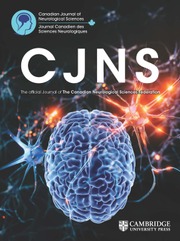No CrossRef data available.
Article contents
P.047 Optimizing workflow of the initial patient visit to the stroke prevention clinic
Published online by Cambridge University Press: 10 July 2025
Abstract
Background: Referrals to the Stroke prevention clinic with incomplete preliminary investigations decrease clinic capacity due to additional workload and the need for follow-ups. We aimed to improve the efficacy of the initial visit by increasing the completion rate of vascular imaging. Methods: Pre-post quasi-experimental study with three phases: Phase 1: Surveillance; Phase 2: Stakeholder feedback-informed intervention development (physicians and clinic staff); and Phase 3: Implementation. Interventions included a new referral order within the provincial EMR; a specific physician triage form listing required investigations (brain imaging, vascular imaging, cardiac tracing); and a nurse-led pre-visit via telephone. The primary outcome measure was the completion of vascular imaging - assessed with multivariable logistic regression Results: The study’s inclusion criteria were met by 383 patients, mean age of 67.6±13.2 years; 49% were female, 62.5% were diagnosed with vascular events. An increase in vascular imaging before the initial visit was found in Phase 3 (139/184, 75.5%) compared to Phase 1 (121/198, 61.1%, Odds ratio 1.96 95% CI 1.3-3.1; p=0.003). Fewer follow-up visits were required in Phase 3 (22.8%) compared to Phase 1 (31.8%, p=0.049). Conclusions: A uniform referral process, a standard triage process, and a nurse-led pre-visit may improve the completion of essential investigations before the patient visit.
Information
- Type
- Abstracts
- Information
- Copyright
- © The Author(s), 2025. Published by Cambridge University Press on behalf of Canadian Neurological Sciences Federation

